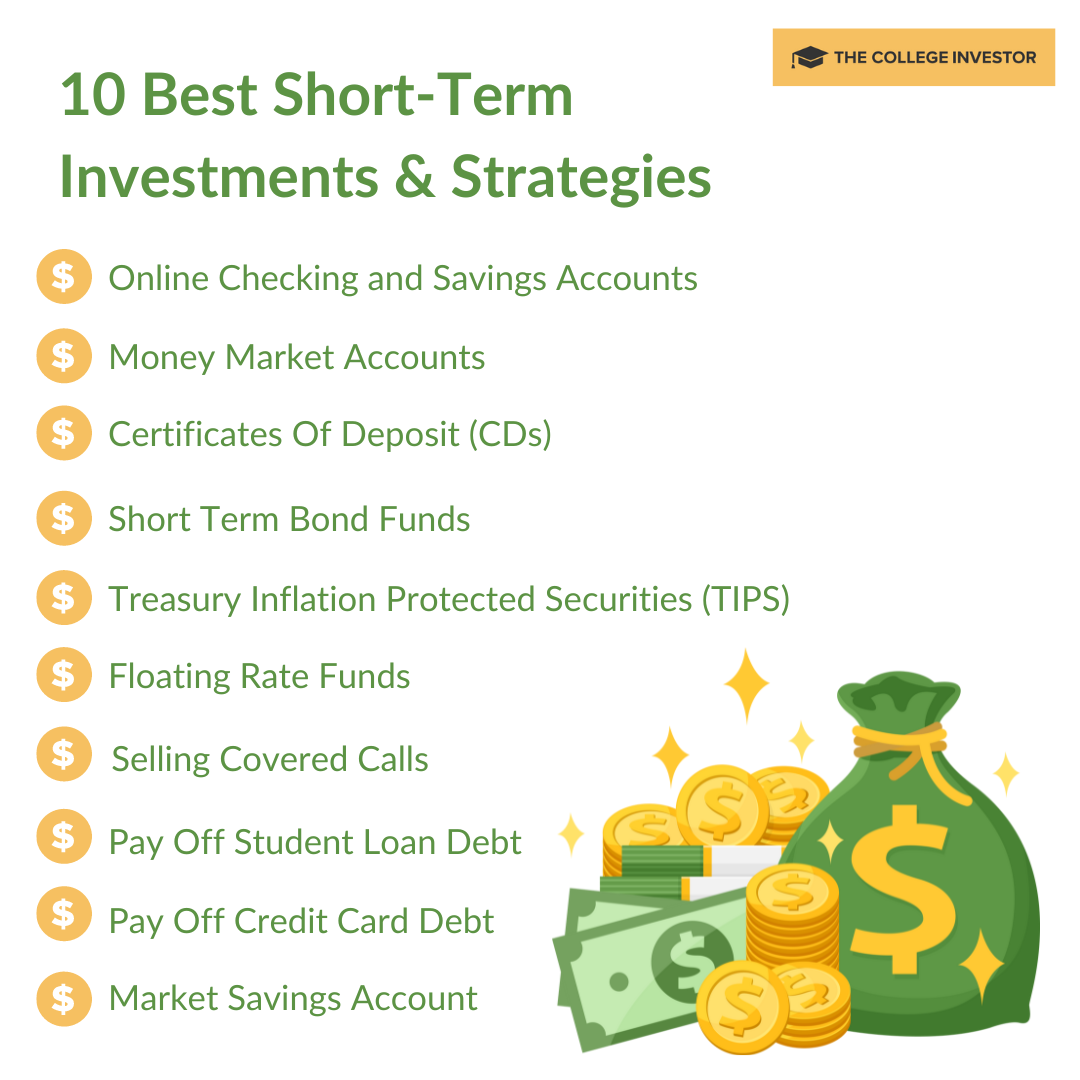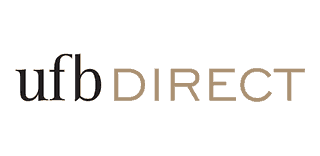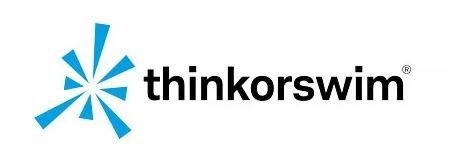
With the stock market at all time highs, you are probably starting to wonder about short-term investments and ways to protect yourself should the market pull back.
Or, you might have short-er term goals that require short term investments. Maybe saving for a house? New car?
If you don't want to see an immediate decline in your portfolio, now's a good time to consider short term investment options. Short term investments typically don't see the growth of longer term investments, but that's because they are designed with safety and a short amount of time in mind.
Millennials and Gen Z honestly haven't experienced a prolonged bear or flat market. While the Great Recession was tough, millennials have seen their net worth's grow. However, in periods of uncertainty, it can make sense to invest in short term investments.
Also, if you may be looking at life events in the near future (such as buying a house or having a baby), having short-term investments that are much less likely to lose value could make a lot of sense.
If you're an investor looking for a place to stash some cash for the short term, here are ten of the best ways to do it.

1. Online Checking and Savings Accounts
Online checking and savings accounts are one of the best short term investments for several reasons:
- They have higher interest rates than traditional accounts
- They are completely safe: your accounts are FDIC insured up to $250,000
- You can access your money any time and don't have to worry about losing interest as a result
However, to get the very best rates from online checking and savings account, you typically have to do one of the following:
- Contribute a certain amount to the account (say $10,000 minimum)
- Sign up for direct deposit into the account
- Use your debit card for a certain number of transactions each month
If you're going to be doing those types of transactions anyway, signing up for one of these accounts can make a lot of sense. And to make these accounts even more attractive, interest rates have been rising the last few months making yields go higher.
See this list of options for savings accounts or check out the other best high yield savings accounts here.
Bank Name | APY | Get Started |
|---|---|---|
At Western Alliance Bank, Member FDIC | ||
At AXOS Bank, Member FDIC | ||
At CIT Bank, Member FDIC |
Bank Name | APY |
|---|---|
At Western Alliance Bank, Member FDIC | |
At AXOS Bank, Member FDIC | |
At CIT Bank, Member FDIC |
2. Money Market Accounts
Money market accounts are very similar to online savings accounts, with one exception. Money market accounts typically aren't FDIC insured. As a result, you actually can earn a little higher interest rate on the account versus a typical savings account.
Money market accounts typically have account minimums that you have to consider as well, especially if you want to earn the best rate.
Our favorite money market account right now is UFB Direct Money Market. They offer 5.25% APY money market accounts with just a $5,000 minimum deposit! Check out UFB Direct here.
Check out our list of the best online bank accounts for your money.
3. Certificates Of Deposit (CDs)
Certificate of deposits (CDs) are the next best place that you can stash money as a short term investment. CDs are bank products that require you to keep the money in the account for the term listed - anywhere from 90 days to 5 years. In exchange for locking your money up for that time, the bank will pay you a higher interest rate than you would normally receive in a savings account.
The great thing about CDs is that they are also FDIC insured to the current limit of $250,000. If you want to get fancy and you have more than $250,000, you can also sign up for CDARS, which allows you to save millions in CDs and have them insured.
Our favorite CD of the moment is the CIT Bank 11-Month Penalty Free CD! Right now you can earn 3.50% APY penalty free! Check it out.
We maintain a list of the best CD rates daily if you want to explore other options.
4. Short Term Bond Funds
Moving away from banking products and into investment products, another area that you may consider is investing in short term bonds. These are bonds that have maturities of less than one year, which makes them less susceptible to interest rate hikes and stock market events. It doesn't mean they won't lose value, but they typically move less in price than longer maturity bonds.
There are three key categories for bonds:
- U.S. Government Issued Bonds
- Corporate Bonds
- Municipal Bonds
With government bonds, your repayment is backed by the U.S. government, so your risk is minimal. However, with corporate bonds and municipal bonds, the bonds are backed by local cities and companies, which increased the risk significantly.
However, it's important to note that investing in a bond fund is different than investing in a single bond, and if you invest in a bond fund, your principal can go up or down significantly. Here's a detailed breakdown of why this happens: Buying a Bond Fund vs. Buying A Single Bond.
If you do want to invest in bonds, you have to do this through a brokerage. The best brokerage I've found for both buying individual bonds and bond funds is Charles Schwab. Schwab has a bond screener built into its platform that makes it really easy to search for individual bonds to buy, and gives you a breakdown of all aspects of the bond.
5. Treasury Inflation Protected Securities (TIPS)
Treasury Inflation Protected Securities (TIPS) are a type of government bond that merits their own section. These are specially designed bonds that adjust for inflation, which makes them suitable for short term investments as well as long term investments. TIPS automatically increase what they pay out in interest based on the current rate of inflation, so if it rises, so does the payout.
What this does for bondholders is protect the price of the bond. In a traditional bond, if interest rates rise, the price of the bond drops, because new investors can buy new bonds at a higher interest rate. But since TIPS adjust for inflation, the price of the bond will not drop as much - giving investors more safety in the short term.
You can invest in TIPS at a discount brokerage. Some of the most common ETFs that invest in TIPs (and are commission-free):
- STPZ - PIMCO 1-5 Year U.S. TIPS Index
- TIP - iShares TIPS Bond ETF
6. Floating Rate Funds
Floating rate funds are a very interesting investment that don't get discussed very often - but they are a really good (albeit risky) short term investment. Floating rate funds are mutual funds and ETFs that invest in bonds and other debt that have variable interest rates. Most of these funds are invested in short term debt - usually 60 to 90 days - and most of the debt is issued by banks and corporations.
In times when interest rates are rising, floating rate funds are poised to take advantage of it since they are consistently rolling over bonds in their portfolio every 2-3 months. These funds also tend to pay out good dividends as a result of the underlying bonds in their portfolios.
However, these funds are risky, because many invest via leverage, which means they take on debt to invest in other debt. And most funds also invest in higher risk bonds, seeking higher returns.
If you want to invest in a floating rate fund, you have to do this at a brokerage as well. The most common floating rate funds are:
- FLOT - iShares Floating Rate Bond ETF
- FLRN - Barclay's Capital Investment Grade Floating Rate ETF
- FLTR - VanEck Vectors Floating Rate ETF
- FLRT - Pacific Asset Enhanced Floating Rate ETF
7. Selling Covered Calls
The last "true" investment strategy that you can use in the short term is to sell covered calls on stocks that you already own. When you sell a call on a stock you own, another investor pays you a premium for the right to buy your stock at a given price. If the stock never reaches that price by expiration, you simply keep the premium and move on. However, if the stock does reach that price, you're forced to sell your shares at that price.
In flat or declining markets, selling covered calls can make sense because you can potentially earn extra cash, while having little risk that you'll have to sell your shares. Even if you do sell, you may be happy with the price received anyway.
To invest in options, you need a discount brokerage that supports this. Schwab has some of the best options trading tools available through their ThinkorSwim platform.
Related: Best Options Trading Platforms
8. Pay Off Student Loan Debt
Do you want a guaranteed return on your money over the short run? Well, the best guaranteed return you can get is paying off your student loan debt. Typical student loan debt interest rates vary from 4-8%, with many Federal loans at 6.8%. If you simply pay off your debt, you can see an instant return on your money of 6.8% or more, depending on your interest rate.
Maybe you can't afford to pay it all off right now. Well, you could still look at refinancing your student loan debt to get a lower interest rate and save some money.
We recommend Credible to refinance your student loan debt. You can get up to a $1,000 bonus when you refinance by using our special link: Credible >>
9. Pay Off Credit Card Debt
Similar to getting out of student loan debt, if you pay off your credit card debt you can see an instant return on your money. This is a great way to use some cash to help yourself in the short term.
There are very few investments that can equal the return of paying off credit card debt. With the average interest rate on credit card debt over 12%, you'll be lucky to match that in the stock market once in your life. So, if you have the cash to spare, pay down your credit card debt as quickly as possible.
If you're struggling to figure out a way out of credit card debt, we recommend first deciding on an approach, and then using the right tool to get out of debt.
For the approach, you can choose between the debt snowball and debt avalanche. Once you have a method, you can look at tools.
First, you need to get financially organized. Use a free tool like Empower to get started. You can link all your accounts and see where you stand financially.
Next, consider either:
- Balance Transfer: If you can qualify for a balance transfer credit card, you have the potential to save money. Many cards offer a promotional 0% balance transfer for a set period of time, so this can save you interest on your credit card debt while you work to pay it off.
- Personal Loan: This may sound counter-intuitive, but most personal loans are actually used to consolidate and manage credit card debt. By getting a new personal loan at a low rate, you can use that money to pay off all your other cards. Now you have just one payment to make. Compare personal loans at Credible here.
10. Market Savings Account
Finally, there's a hybrid option that recently launched that combines the safety of a savings account with the returns of an investment account. That tool is SAVE. SAVE calls their product the Market Savings Account.
Essentially, this product allows you to tap into a better way to store your savings. You’ll still have the access you need without giving up substantial returns.
As of March 2024, Market Savings offers variable APYs* ranging from 7.97% to 9.07%. In order to tap into these relatively high variable APYs*, sign up for specific lengths of time. Here’s the breakdown:
- 1-year term: 9.07% APY*
- 5-year term: 7.97% APY*
Compared to other online savings accounts, these variable APYs* are impressive. But there is a catch. The future performance of the market is obviously unpredictable. If the market doesn’t meet Save’s expectations, the actual variable APY* you see in your account will be higher or lower.
If you want to open an account with a one-year term, you’ll need a minimum deposit of at least $1,000. If you want to open one with a five-year term you need a minimum balance of $5,000.
Market Savings Performance
If you want to see how actual customers have done using Save Market Savings, check out this informative page from Save. As of March 1, 2024, the average customer account has returned 7.64%. However, 50% of all customer accounts have made less than 3.20% and 50% have made more than 3.20%. When you started your Save account and what investment choices you make has a big impact on returns.
Final Thoughts
Finding short term investments can be tough. It's a bit counter intuitive to invest, but only for a short period of time. As a result, you'll typically see investments with lower returns, but also have lower risk of loss.
What are your favorite short term investments?

Robert Farrington is America’s Millennial Money Expert® and America’s Student Loan Debt Expert™, and the founder of The College Investor, a personal finance site dedicated to helping millennials escape student loan debt to start investing and building wealth for the future. You can learn more about him on the About Page or on his personal site RobertFarrington.com.
He regularly writes about investing, student loan debt, and general personal finance topics geared toward anyone wanting to earn more, get out of debt, and start building wealth for the future.
He has been quoted in major publications, including the New York Times, Wall Street Journal, Washington Post, ABC, NBC, Today, and more. He is also a regular contributor to Forbes.
Editor: Clint Proctor Reviewed by: Ashley Barnett


